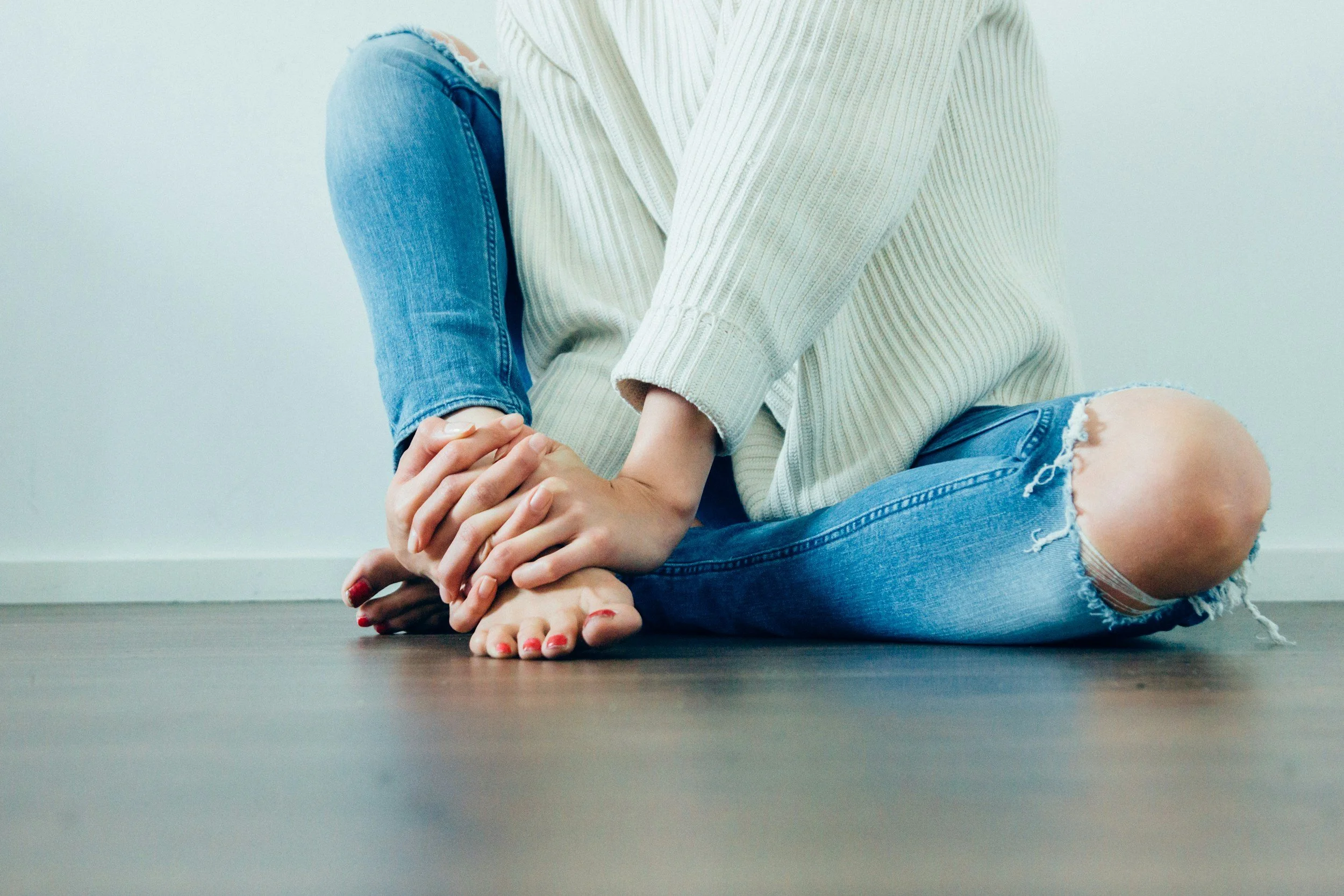Foot Pain: Understanding the Foundation of Your Movement
Our feet are remarkable structures, comprising 26 bones, 33 joints, and over 100 muscles, tendons, and ligaments. They form the very foundation of our body, bearing our entire weight and propelling us through life. It's no surprise that when something goes wrong with our feet, the impact can be felt throughout our entire body.
Foot pain is a common complaint that can stem from acute injuries, chronic conditions, or underlying biomechanical issues. Osteopathy offers a unique perspective, looking beyond the site of pain to understand how your entire musculoskeletal system contributes to foot health.
Key Facts About Foot Pain
Widespread Issue: Foot problems affect up to one in four people at any given time, with prevalence increasing with age.
Impact on Mobility: Chronic foot pain is strongly associated with limitations in daily activities, poorer overall health, and an increased risk of falls.
The Kinetic Chain: Your feet are the base of your kinetic chain. Problems in your feet can cause issues in your ankles, knees, hips, and back, and vice versa.
Common Causes of Foot Pain
Understanding the source of your pain is the first step toward effective treatment. Common causes include:
Plantar Fasciitis: The most common cause of heel pain, involving inflammation of the thick band of tissue (the plantar fascia) that runs across the bottom of your foot, connecting your heel bone to your toes.
Achilles Tendinopathy: Pain, stiffness, and degeneration in the Achilles tendon at the back of the ankle, often caused by overuse.
Bunions (Hallux Valgus): A bony bump that forms on the joint at the base of the big toe, often causing the toe to deviate inward and leading to pain and difficulty with footwear.
Osteoarthritis: Wear-and-tear arthritis that can affect any of the foot's joints, particularly the big toe, leading to pain, stiffness, and swelling.
Morton's Neuroma: A thickening of the tissue around a nerve leading to your toes, most commonly between the third and fourth toes, causing a sharp, burning pain and sensation of a pebble in your shoe.
Flat Feet (Pes Planus) or High Arches (Pes Cavus): These structural variations can alter how weight is distributed across your feet, leading to pain and increasing the risk of other conditions.
Stress Fractures: Small cracks in a bone, often caused by repetitive force or overuse, common in the metatarsal bones of the foot.
How Can Osteopathy Help with Foot Pain?
Osteopathic treatment for foot pain is holistic. We don't just focus on the painful foot; we assess your posture, gait, and the function of your ankles, knees, hips, and pelvis to identify the underlying reasons for the dysfunction.
During your initial consultation, we will:
Take a detailed history to understand the nature of your pain, your daily activities, and your footwear.
Perform a thorough physical examination of your feet, assessing their structure, mobility, and any areas of tenderness.
Conduct a gait analysis to observe how you walk or run, identifying any abnormal movement patterns.
Assess your posture and the mobility of your ankles, knees, hips, and spine.
This comprehensive approach allows us to create a tailored treatment plan that addresses the root cause.
What Does Osteopathic Treatment Involve?
Using a range of gentle, hands-on techniques, we aim to:
Reduce Pain and Muscle Tension: Soft tissue massage, myofascial release, and stretching can help relax tight muscles in the feet, calves, and lower legs.
Improve Joint Mobility: Gentle articulation and mobilisation techniques can help restore normal, pain-free movement to the joints of the foot, ankle, knee, and hip.
Address Biomechanical Imbalances: We treat dysfunctions throughout the lower limb and pelvis that may be altering your gait and placing excessive stress on your feet.
Enhance Circulation and Healing: Gentle techniques aim to improve blood flow to the affected areas, supporting the body's natural healing processes.
Provide Personalised Advice and Rehabilitation: You will receive guidance on specific strengthening and stretching exercises, footwear choices, and potential orthotic considerations to support your recovery and prevent recurrence.
When to Seek Immediate Medical Help
While most foot pain is musculoskeletal, certain symptoms require prompt medical attention. Please consult your GP or seek urgent care if your foot pain is accompanied by any of the following:
An inability to bear weight or walk.
A visible deformity or a "popping" sound at the time of injury.
Signs of infection, such as fever, redness, warmth, swelling, or an open wound.
Numbness, tingling, or coldness in the foot, or a foot that appears discoloured (blue or pale).
Severe pain that does not improve with rest.
Take the Next Step Towards Pain-Free Feet
Your feet are your foundation. Don't let pain keep you from standing, walking, and living comfortably. Osteopathy provides a safe, effective, and drug-free approach to not only alleviating your foot pain but also addressing the underlying causes to ensure long-term health and mobility.
Click here to schedule an appointment with one of our experienced osteopaths. Let us help you get back on your feet, pain-free.
References
Australian Institute of Health and Welfare (AIHW). (2020). Musculoskeletal conditions. [Link: https://www.aihw.gov.au/reports/chronic-musculoskeletal-conditions/musculoskeletal-conditions]
*Thomas, M. J., et al. (2019). The population prevalence of foot and ankle pain in middle and old age: a systematic review. Pain, 160(11), 2451-2459. [Link: https://journals.lww.com/pain/Abstract/2019/11000/The_population_prevalence_of_foot_and_ankle_pain.9.aspx]*
Schwartz, E. N., & Su, J. (2014). Plantar fasciitis: a concise review. The Permanente Journal, 18(1), e105–e107. [Link: https://www.ncbi.nlm.nih.gov/pmc/articles/PMC3954276/]
Disclaimer: This blog post provides general information only and is not intended as a substitute for professional health advice, diagnosis, or treatment. Always consult a registered health practitioner, such as your General Practitioner (GP) or osteopath, for diagnosis and treatment of health conditions. The information provided is based on the best available evidence at the time of publication but should not be relied upon as a sole source of information. Individual results from osteopathic treatment may vary based on the individual’s specific condition and response to care.

